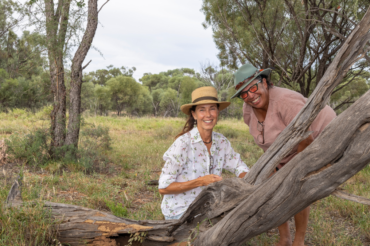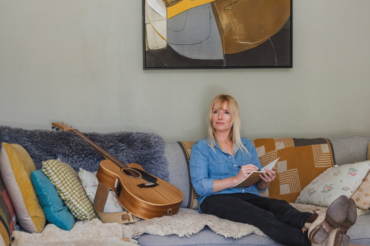
You know that version of the song Lady Marmalade, where Christina Aguilera pumps out that EPIC note as she begins her verse? What a MOMENT, right!? That’s what these melting moments remind me of. The slightly bitter tang of the marmalade in the buttercream is enough to splice through the richness of the biscuit and filling, and as it melts on your tongue, you’ll find yourself having a moment, too. I’ve adopted the custard powder of the classically Aussie yo-yo biscuit, because I like the colour and flavour it provides. Most melting moments recipes use cornflour — either of these additions stop the flour and fat binding too tightly, which means the biscuit will, quite literally, melt in your mouth.
Makes about 25 filled biscuits
⅓ cup (40g) icing (confectioners’) sugar
250 g (9oz) unsalted butter, softened
1½ cups (225g) plain (all-purpose) flour, plus extra for dusting (see Subs)
½ cup (75g) custard powder (see Subs)
1 teaspoon baking powder
¼ teaspoon salt flakes
Marmalade buttercream
100g unsalted butter, softened
⅔ cup icing sugar, plus extra for dusting
Zest and juice of ½ orange
1 heaped tablespoon orange marmalade
Line two light-coloured (see Tips) baking trays (ideally biscuit trays) with baking paper.
If your icing sugar is lumpy, pop it into a food processor and blitz, or into a zip-lock bag and mash with a rolling pin. Using a stand mixer with the paddle attachment, beat the softened butter until uniformly soft, then add the icing sugar and beat until the mixture is pale and creamy (more is more here). Sift together the flour, custard powder and baking powder. Add to the butter mixture, along with the salt, and mix with a wooden spoon until just combined.
Use a teaspoon measure dusted with a smidge of flour to scoop out 2 level teaspoons (5g) of the mixture, rolling into walnut-sized balls between your hands. If your hands are hot, pat a little flour onto them to stop the mixture sticking. Evenly space the balls out on the baking trays. Don’t worry if they’re a bit mangy; you can always smooth them out once chilled. Pop the trays in the fridge to chill for 15 minutes, or even overnight.
When ready to bake, preheat the oven to 150°C. Use a floured fork to press each dough ball into a 2cm disc. Bake for 15–18 minutes, until the biscuits are set enough to be dislodged with a gentle prod, are custard-yellow in colour and the bottom is still blonde. Allow to cool for 10 minutes, then cool completely on a wire rack before filling.
Make your buttercream in the stand mixer by creaming the butter and icing sugar together until super pale. Add the orange zest, juice and marmalade and beat until incorporated.
To fill the biscuits, either transfer the buttercream to a piping bag and squeeze it over half the biscuits, or spread a teaspoon of filling over them. Pop the unfilled biscuits on top of the filled ones like hats, squashing ever so slightly to more evenly distribute the filling. Give the whole lot one last dusting of icing sugar as a final flourish.
The biscuits will keep in an airtight container in a cool place for up to 5 days. They can also be frozen (filled or unfilled) for up to 3 months; thaw for at least 30 minutes before serving.
Tips Place any left-over dough on a piece of baking paper, roll up into a log (twisting the edges so it looks like salami) and stash in the freezer. When you have a hankering, simply slice off 1cm pieces and bake as normal.
There are entire books and blogs dedicated to tweaking the various variables on the biscuit/cookie caper, but some tricks of the trade are so tried and true that you simply must capitulate — after all, it’s science!
For evenly coloured biscuits, using an aluminium or lighter-coloured biscuit tray will make all the difference — the darker the tray, the more heat it absorbs, which leads to toasty bottoms (not in a good way, sadly). Biscuit trays are also almost entirely flat, which means that the heat can access each side of the biscuit evenly.
The more butter/fat you add to the dough, the “shorter” your biscuit will be, meaning the more easily
it crumbles.
Subs You can use cornflour if you don’t have custard powder; if so, add 1 teaspoon vanilla extract or vanilla bean paste PLUS an extra 1 tablespoon icing sugar to your biscuit mixture. Amazingly, gluten-free
flour is just as good here.
Images and text from The Joy of Better Cooking by Alice Zaslavsky, photography by Ben Dearnley. Murdoch Books, $49.99. Learn more here.
Love this recipe? Check out our others here









